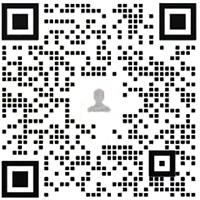

Welcome to Pinghu Zhanpeng Hot Melt Adhesive Web & Film Co., Ltd. Enterprise Official Website.

It’s essentially industrial PE wrinkle free shirt tape strength masking tape. Like masking tape, it’s generally somewhat translucent, but not transparent. It tends to be softer and more flexible than clear tape. Its primary advantage is the wide range of tack levels. Paper tape can be purchased in low, medium, or high tack variants. It also tends to be less expensive than clear tape.The other major advantage of paper tape is the porous nature of the face film. This makes it ideal for use with application fluids like RapidTac or SureGlide. Users who want to expand the margin of error when applying the pre-masked letters to the substrate can add a light coating of application fluid that lubricates the substrate, retarding the adhesive of the tape and vinyl just enough to allow them to move it into position. This wet application process can trap fluid under the tape.
With paper tape, this isn’t a problem because pressure can force the fluid through the tape’s face film so it can be wiped away with a paper towel.The main virtue of paper tape is its versatility. There isn’t one tape that will work for everything, but a good quality paper tape in medium and high tack variants could probably cover of your needs. So why use clear tape? Because there are a few things paper tape doesn’t do quite as well.Because of its paper face film, it’s not as useful for building multi-colored vinyl graphics that require precise registration of one layer upon another. Even for single color graphics, it can be hard to see exactly where the vinyl is going to end up. And if you’re selling DIY graphics that your customer will install him or herself, the paper pre-mask dilutes the visual appeal of your product. The need for more transparency or better presentation quality leads many people to choose clear tape.Clear tapes are so transparent because they’re made from plastic face films instead of paper.
The clear plastic construction provides the transparency some sign makers need. As noted above, it also makes the pre-masked image more appealing for DIY customers because the underlying vinyl design is clearly visible. This clarity of the vinyl also makes installation easier because the installer can see exactly where the letters will be in relation to the substrate or other design elements. Another drawback to clear tapes is static. The plastic face film tends to generate a static charge, especially in arid environments. This can attract dust and debris, which makes clean bubble-free transfers more difficult. The final limitation of clear tape involves limited versatility. Unlike paper tape, clear tapes made for vinyl graphics cannot be used for heat press T-shirt transfers. The plastic face film tends to melt at the temperatures required for successful thermal transfers. Try to match the tack level of the tape with the properties of the vinyl and substrates you’re using.
There are three factors to consider; the adhesive bond between the tape and the vinyl, the bond between the tape and the substrate and the bond between the vinyl and the substrate. Ideally, the bond between the tape and vinyl should be stronger than that between the vinyl and the Kraft paper release liner. If not, the tape won’t pull the vinyl off the liner. If you’re using a different vinyl such as Avery or EnduraGLOSS, you won’t necessarily need as high a tack to remove the vinyl from the liner, but you may need to think about the other factors: the relationship between the vinyl and the substrate and between the tape and substrate. Using high tack tape to apply a graphic to a super smooth surface like glass or painted aluminum isn’t ideal. The tape bonds to the surface so strongly that, when it’s removed, it tends to stress the fresh bond between the newly applied vinyl and the substrate. This can lead to bubbles in the vinyl.




